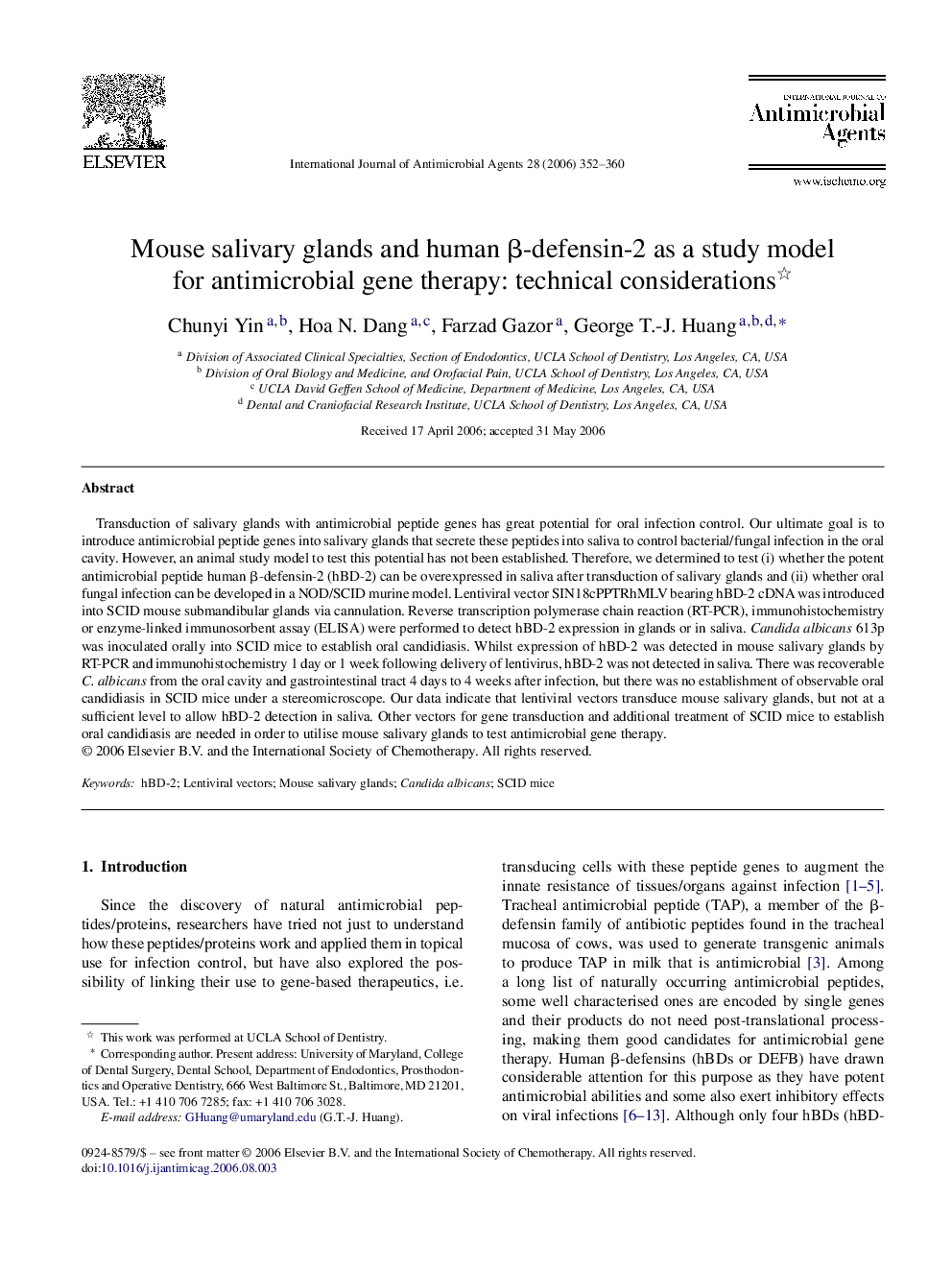| کد مقاله | کد نشریه | سال انتشار | مقاله انگلیسی | نسخه تمام متن |
|---|---|---|---|---|
| 3361015 | 1591897 | 2006 | 9 صفحه PDF | دانلود رایگان |

Transduction of salivary glands with antimicrobial peptide genes has great potential for oral infection control. Our ultimate goal is to introduce antimicrobial peptide genes into salivary glands that secrete these peptides into saliva to control bacterial/fungal infection in the oral cavity. However, an animal study model to test this potential has not been established. Therefore, we determined to test (i) whether the potent antimicrobial peptide human β-defensin-2 (hBD-2) can be overexpressed in saliva after transduction of salivary glands and (ii) whether oral fungal infection can be developed in a NOD/SCID murine model. Lentiviral vector SIN18cPPTRhMLV bearing hBD-2 cDNA was introduced into SCID mouse submandibular glands via cannulation. Reverse transcription polymerase chain reaction (RT-PCR), immunohistochemistry or enzyme-linked immunosorbent assay (ELISA) were performed to detect hBD-2 expression in glands or in saliva. Candida albicans 613p was inoculated orally into SCID mice to establish oral candidiasis. Whilst expression of hBD-2 was detected in mouse salivary glands by RT-PCR and immunohistochemistry 1 day or 1 week following delivery of lentivirus, hBD-2 was not detected in saliva. There was recoverable C. albicans from the oral cavity and gastrointestinal tract 4 days to 4 weeks after infection, but there was no establishment of observable oral candidiasis in SCID mice under a stereomicroscope. Our data indicate that lentiviral vectors transduce mouse salivary glands, but not at a sufficient level to allow hBD-2 detection in saliva. Other vectors for gene transduction and additional treatment of SCID mice to establish oral candidiasis are needed in order to utilise mouse salivary glands to test antimicrobial gene therapy.
Journal: International Journal of Antimicrobial Agents - Volume 28, Issue 4, October 2006, Pages 352–360